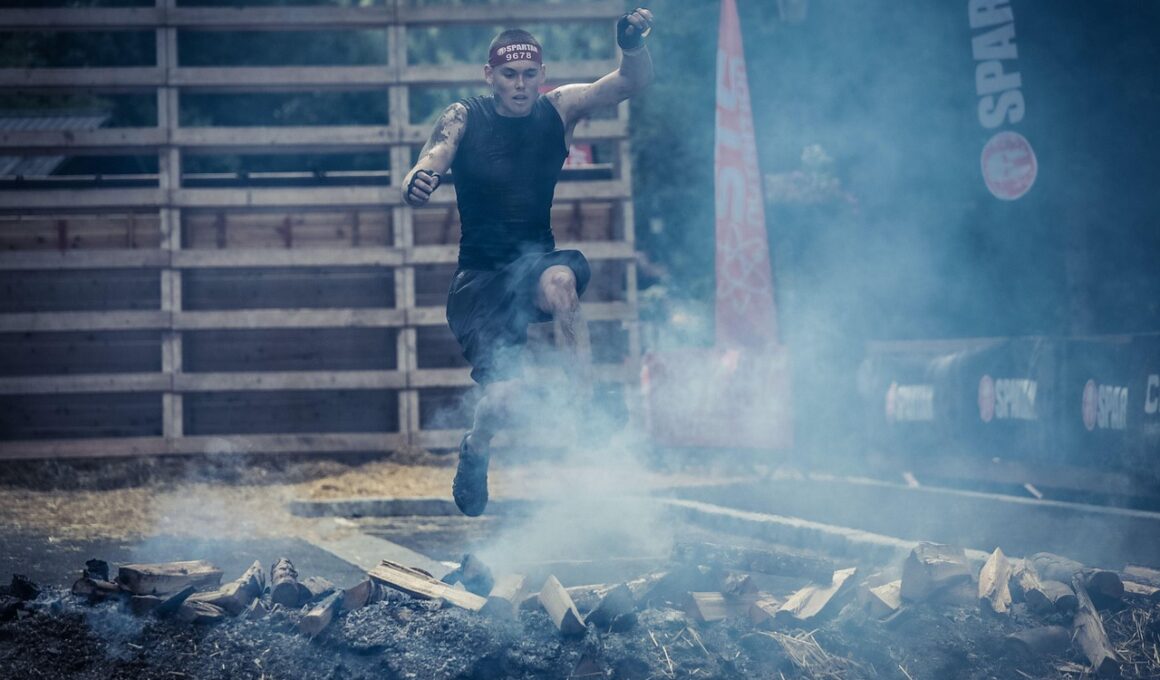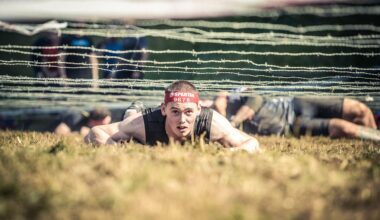Planning Your First Obstacle Course Race: What Beginners Need to Know
Obstacle course racing (OCR) is an exhilarating sport that combines endurance, strength, and agility. For beginners, the planning phase is crucial, as it sets a solid foundation for success. Start by choosing an OCR suitable for your fitness level, considering distances and difficulty. Research events in your area by visiting websites like Obstacle Course Racing. Once you choose an event, set a training schedule that’s realistic and sustainable. Aim for three to four days of training per week to gradually build up your strength and stamina. Incorporate a mix of running, strength exercises, and obstacle-specific training. Try to practice on an actual obstacle course if possible to familiarize yourself with typical obstacles. Remember to listen to your body, allowing for rest days to recover. Finding a group or partner to train with can enhance motivation and enjoyment. Additionally, consider joining local OCR training classes for specialized guidance. The excitement of completing your first race will make all the hard work worthwhile. Embrace the journey, and stay positive throughout your training.
Essential Skills for OCR Success
In preparation for your first obstacle course race, it’s vital to develop essential skills that will aid your performance on race day. Focus on improving your running endurance since OCRs often involve long distances. Incorporate interval training to boost speed and stamina. Strength training is equally crucial; dedicate sessions to upper body, lower body, and core workouts. Exercises such as pull-ups, burpees, squats, and planks can enhance overall strength. Never underestimate the importance of agility; agility ladders and cone drills can improve your footwork. Practice specific obstacles you might face during the race, such as climbing walls, crawling under nets, or traversing monkey bars. Work on grip strength since you will be required to hold onto ropes and other challenging structures. A well-rounded training regimen involving various disciplines—like running, strength training, and obstacle practice—will equip you with the skills necessary for success. Don’t forget flexibility; adding yoga or stretching can improve mobility and prevent injury. As you train, maintain a positive mindset and visualize conquering each obstacle, boosting your confidence for race day.
Nutrition plays an important role in your overall performance and recovery. A balanced diet rich in whole foods such as fruits, vegetables, lean proteins, and whole grains can help fuel your training. Your body requires adequate hydration, especially during intense workouts. Make sure to drink enough water before, during, and after training sessions. Consider energy-boosting snacks like nuts, protein bars, or fruit before workouts to maintain energy levels. After training, refuel with proteins for muscle recovery and carbohydrates to replenish glycogen stores. Meal prepping can save you time during busy weeks; prepare healthy meals in advance to avoid poor eating choices. Consulting a sports nutritionist could provide personalized guidance tailored to your specific training needs. Additionally, consider supplementation; options like protein powders, creatine, or electrolyte drinks might be beneficial, but always consult a healthcare professional before starting anything new. Lastly, pay attention to your body’s signals. Adjust your diet as necessary based on your training intensity, recovery needs, and personal preferences. Finding what works best for you will enhance your OCR experience and performance on race day.
Gear Essentials for OCR
Selecting the right gear is essential to maximize comfort and performance during your obstacle course race. Start with proper footwear; shoes specifically designed for OCR should provide grip, traction, and drainage. Look for brands that specialize in trail or OCR-specific shoes, offering protective features from mud and water. Apparel is another critical consideration; avoid cotton materials as they retain moisture and can cause chafing. Lightweight, moisture-wicking fabrics will help keep you dry and comfortable during the race. Don’t forget to invest in gloves; they can provide grip and protection for your hands when scaling obstacles. A good sports bra is also vital for women, ensuring comfort and support throughout the race. Carrying a small hydration pack can also be helpful for longer races, allowing you to stay hydrated without searching for water stations. Check the weather forecast before the race and dress in layers if necessary. Lastly, ensure your chosen gear fits properly and has been tested during training. This will help to avoid surprises and discomfort on race day.
It’s crucial to prepare mentally for your first obstacle course race. Overcoming obstacles often requires a mindset that embraces challenges and discomfort. Start by setting realistic goals for your performance. These might include finishing stronger, completing every obstacle, or simply enjoying the experience without pressure. Practice positive visualization; picturing yourself succeeding at each obstacle can boost confidence. Create a motivational playlist to energize your training sessions, inspiring you throughout your workouts. Staying focused on your pre-race routine can help ease nerves. Consider employing deep breathing techniques to remain calm before and during the race. It’s also important to learn from failures; every participant faces challenges, so embrace the experience as a learning opportunity. Surround yourself with supportive friends or fellow racers; a positive environment can greatly influence your attitude. Keep in mind that everyone presents unique strengths and weaknesses. Accept that not everything will go perfectly and be prepared to adapt if unexpected situations arise during the race. Remember, your attitude often governs your performance. By training your mind alongside your body, you’ll be better equipped to tackle the obstacles ahead.
Race Day Preparation
On race day, ensure you are fully prepared and organized to enhance your performance and enjoyment. Start by setting your alarm for an early rise, allowing sufficient time to eat a light breakfast, hydrate, and travel to the race venue. Arriving early can alleviate stress and give you time to warm up. Don’t forget to review the race course map, familiarizing yourself with obstacles and pacing strategies. Confirm that you have all your gear packed the night before, including your registration details, race bib, and any essentials needed throughout the day. Before your heat begins, perform a dynamic warm-up to get your body primed for the strenuous efforts ahead. Engaging in light jogging, stretching, and mobility exercises will prepare your muscles. Remember to pace yourself; starting too quickly can lead to exhaustion later on. Focus on steady breathing and positive thoughts. During the race, don’t hesitate to ask for assistance; fellow participants often support each other. Enjoy the unique atmosphere and the camaraderie with fellow competitors; savor the experience and celebrate your accomplishment at the finish line.
After completing your first obstacle course race, recovery is crucial for ensuring future success and maintaining overall health. Begin with hydration and nutrition to replenish energy lost during the race. Focus on consuming nutrient-rich meals that promote muscle recovery. Include protein sources like chicken, fish, or plant-based alternatives, and incorporate plenty of vegetables and carbohydrates. Post-race, schedule time for proper stretching to improve flexibility and reduce muscle soreness. This can include foam rolling and yoga to soothe tight muscles. Monitor your body for any signs of injury or discomfort, addressing any concerns with rest as needed. Plan to take a few rest days to allow for recovery, but don’t drop physical activity completely. Engage in low-impact exercises like swimming, cycling, or walking to maintain fitness levels without overexerting yourself. Reflect on your performance by journaling what went well and areas for improvement. This practice helps prepare you for your next race. Lastly, celebrate your achievements, no matter how small, and consider setting new goals or participating in more OCRs to continue your journey.


